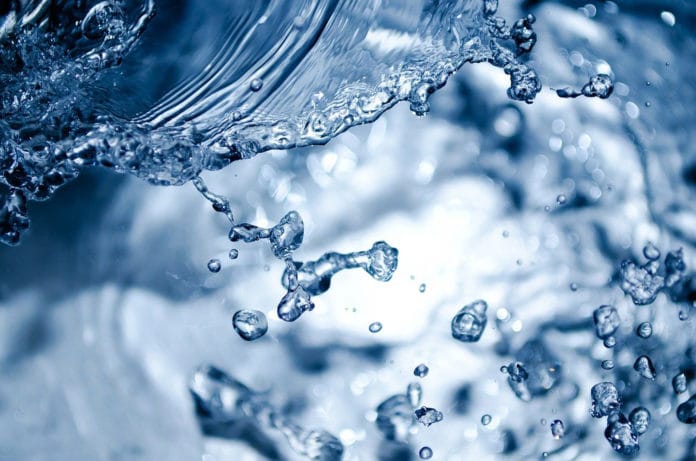Scientists from the University of London have found a surprising similarity between quark-gluon plasma and tap water: the way it flows.
In a new study, scientists have shed light on the flow of quark-gluon plasma, the hot soup of elementary particles formed a few microseconds after the Big Bang.
The flow of liquid depends on the ratio between the viscosity of a fluid and its density. In terms of quark-gluon plasma, viscosity and density are about 16 orders of magnitude larger than in water.
Scientists found that the ratio between the viscosity and density of these two types of fluids is the same. This means one of the most exotic states of matter known to exist in our universe would flow out of your tap in much the same way as water.
It is believed that up to a few microseconds after the Big Bang, the universe was in a hot quark-gluon plasma state. This then cooled microseconds later to form the building blocks of all the matter found within our universe.
Since 2000, scientists could recreate quark-gluon plasma experimentally using large particle colliders.
Quarks and gluons break free from their parent nucleons at very high temperatures and form a dense, hot soup known as quark-gluon plasma.
Scientists found that, even if there are considerable differences in the behavior of atoms and molecules of water and hot quark-gluon plasma, the ratio of viscosity and density, known as the kinematic viscosity, is close in both quark-gluon plasma and ordinary liquids.
This ratio has a vital role in fluid flow as it depends on viscosity alone. Here, the Navier-Stokes equation takes place, which contains density and viscosity.
Significantly, it’s not just the liquid viscosity that corresponds with the viscosity of quark-gluon plasma. The viscosity of fluid varies depending on the temperature. However, one point should be noted: there is one very particular point where liquid viscosity has a nearly-universal lower limit.
In a past study, scientists have found that fluid viscosity is monitored by fundamental physical constants such as the Planck constant and the nucleon mass in that limit. The recent study found this universal lower limit of viscosity of ordinary fluids like water which turns out to be close to the viscosity of quark-gluon plasma.
Professor Kostya Trachenko, Professor of Physics at Queen Mary University of London and author of the recent paper, said: “We do not fully understand the origin of this striking similarity yet, but we think it could be related to the fundamental physical constants which set both the universal lower limit of viscosity for both ordinary liquids and quark-gluon plasma.”
Professor Matteo Baggioli from the Universidad Autónoma de Madrid said, “This study provides a fairly rare and delightful example of where we can draw quantitative comparisons between hugely disparate systems. Liquids are described by hydrodynamics, which leaves us with many open problems at the forefront of physics research. Our result shows the power of physics to translate general principles into specific predictions about complex properties such as liquid flow in exotic types of matter like quark-gluon plasma.”
Professor Vadim Brazhkin from the Russian Academy of Sciences said, “It is conceivable that the current result can provide us with a better understanding of the quark-gluon plasma. The reason is that viscosity in liquids at their minimum corresponds to a very particular regime of liquid dynamics which we understood only recently. The similarity with the QGP suggests that particles in this exotic system move in the same way as tap water.”
Journal Reference:
- Kostya Trachenko et al, Similarity between the kinematic viscosity of quark-gluon plasma and liquids at the viscosity minimum, SciPost Physics (2021). DOI: 10.21468/SciPostPhys.10.5.118
